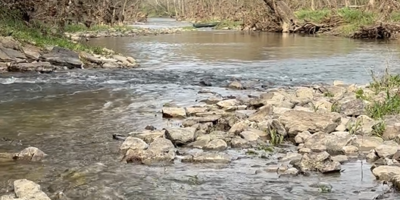Out on the streets, that’s where we’ll meet
By Captain Comannokers
When we think of people and transportation, we think of infrastructure, and safety, and technology – and probably a number of other key factors before we land on an aspect that often is overlooked: the emotion of transportation.
And there is plenty of it, too, especially in the daily travels of an urban area. People are wound up balls of emotion, even if they don’t readily admit to it. We acknowledge the fact that we get emotional at large events in our lives – weddings, funerals, holidays, and (of course) national championships. But we aren’t ready to admit that “I drove to Kroger to pick up some milk, bread, Fritos, and two pounds of flavored Tootsie Rolls – and it was soooo emotional.” The fact is, a lot of the time it is.
You get frustrated sitting at long lights, or at the person driving too slowly in front of you. And the anger evoked by parking lot maneuvering, well, that’s next-level shit.
I consider myself a defensive and safe cyclist, but I’m hardly free from emotion. When riding as a city commuter, one finds countless opportunities to be flummoxed by the transportation gaffes that I see: from drivers who don’t want to recognize me as a vehicle, to fellow cyclists who make up rules of the road as they go.
I try to keep things in perspective. Around my northside neighborhood, bikes are often used a little differently than what I use mine for. I’m one of only a handful of people wearing a helmet, and no one is going to start regularly using hand signals. I think “trying” to keep perspective while riding is a challenge – but also valuable. I prepare myself for tricky places for driver-cyclist interaction, so I don’t start yelling as a knee-jerk reaction if things don’t go as I expect them.
Avoiding reactionary emotions to each and every move on the road is healthy no matter what form of transportation you are using. That’s true for public transportation, too. When I rode the subway everyday, holy crap, there were some people who were walking sticks of anxiety dynamite.
I also have adjusted my routes based on a “least emotional” scale. Depending on time of day and traffic patterns, I put myself in situations that are going to yield the least stress and fewest flare-ups.
For example, I used to ride Elm Tree/Rose southbound on my way to work, but the issues that arise at High St. just became too much to deal with daily. Now I take MLK through downtown with improved results. I noticed that the recommended bike route by the LFUCG agrees with that choice as well (especially over an option like Upper St.). If I wanted to continue on Rose, I had to struggle to get left into the lane of through traffic. If I chose to take the right hand turn onto High St., vehicles would try to pass me at the last second in order to take the same right hand turn. It was a lose-lose most days.
When we are in cars, we don’t often think in those terms – if there is construction, or an accident, we will take an alternate route, but most of the time it’s just hit the gas and go. Add in the insanity of the “technology” part of transportation (calling, texting, liking your friend’s all-too-humorous Facebook status), or the outrage caused by seeing those behaviors behind the wheel, and simply going somewhere is fraught with emotional peril.
You shake your head in disbelief, you swerve, you gun it. Some people might even yell, or be adept at the art of sign language (we’ll try to keep that type of behavior hushed and under our breath here). It’s an emotional journey out there, even for the most Zen of us. The sooner we recognize that, the better off we will be.
In order for pedestrians, cyclists, and drivers to share the road successfully (I’m not talking utopia here, simply that we relax our reflex to throw things at each other), we all need to check our level of emotion when on the move. What you do to calm yourself is up to you: count to 10, whistle, listen to Yanni – whatever it takes.
Be safe out there – this is your Captain speaking, over and out.




Leave a Reply